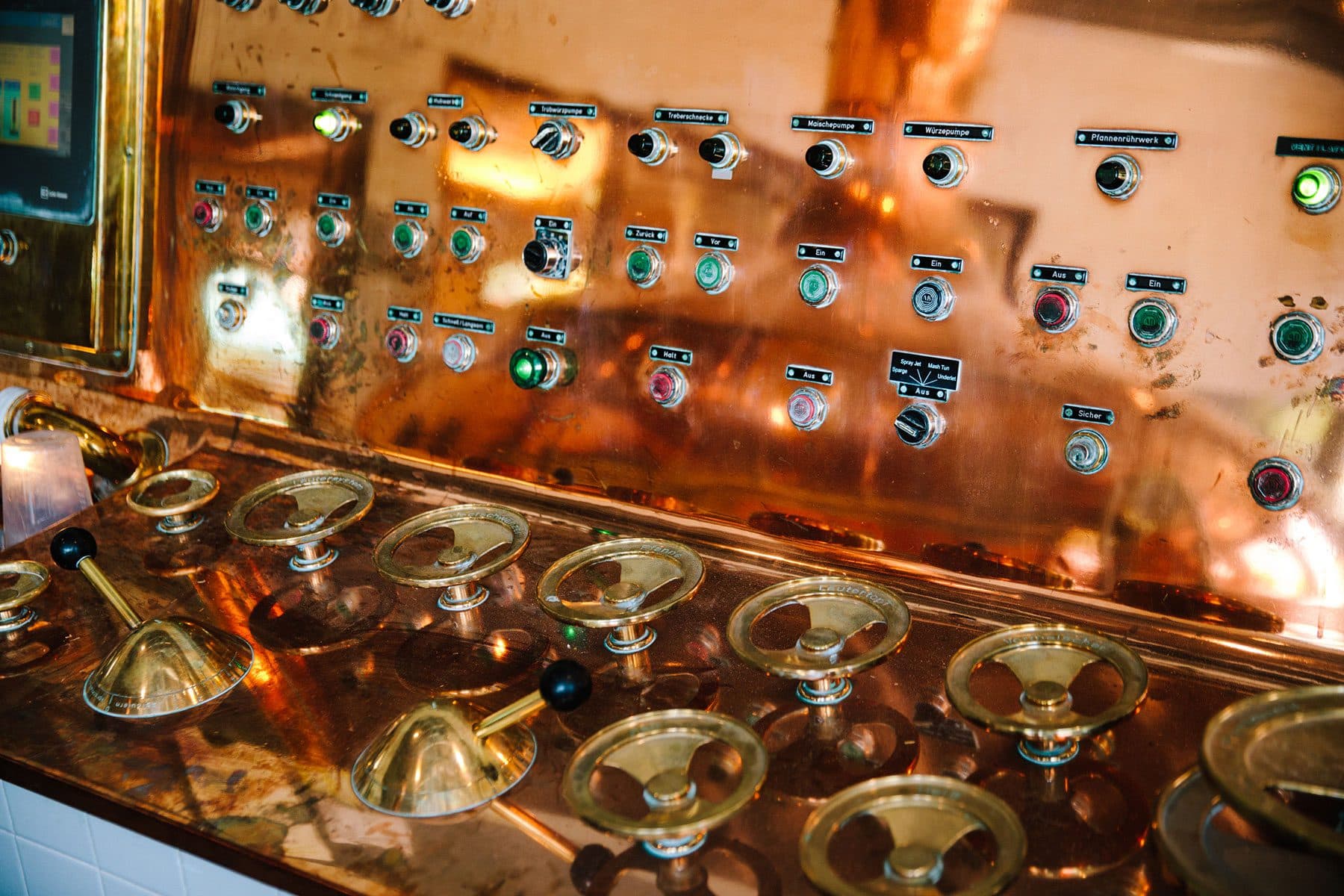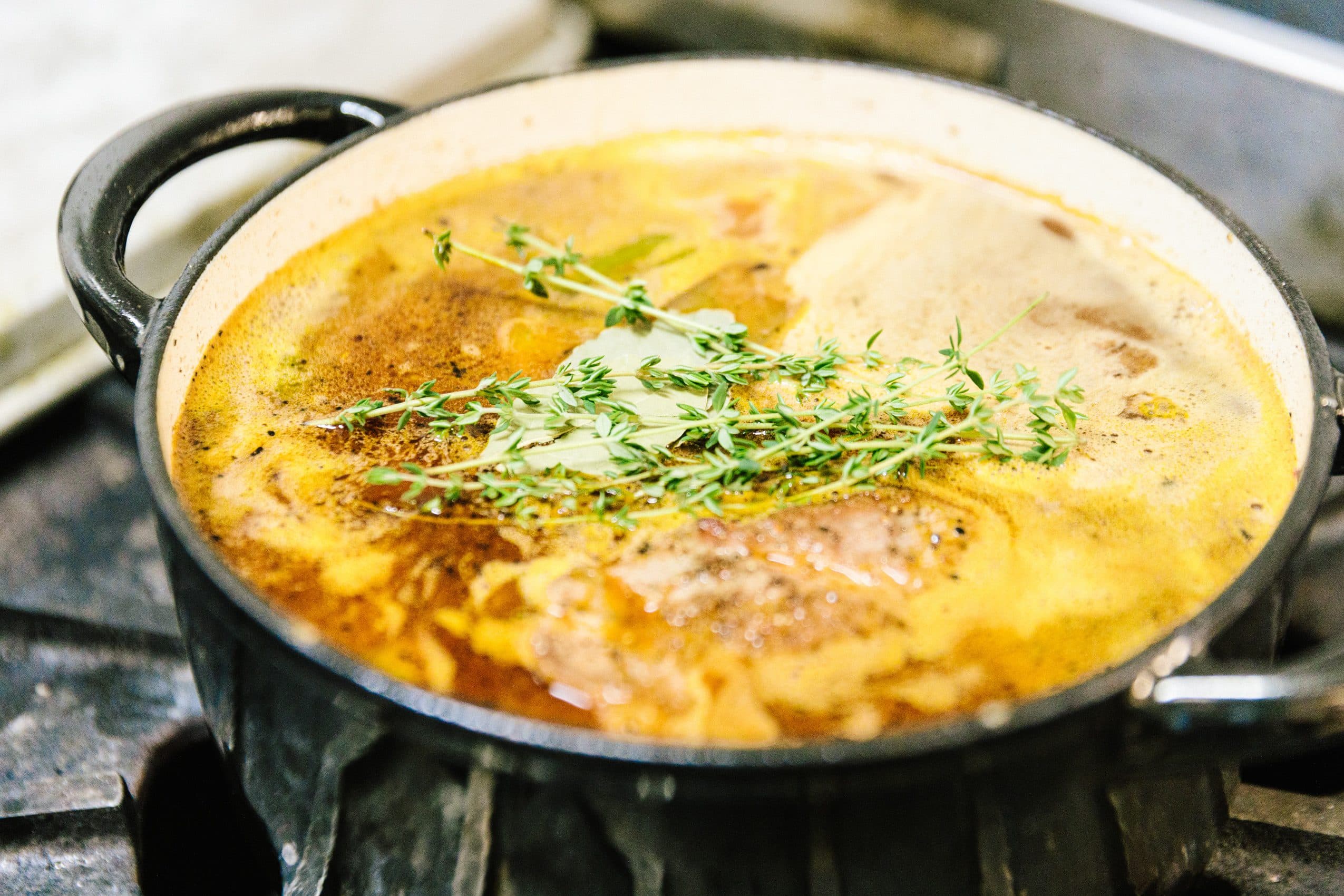
Beer has been around for 80 centuries — yet it is only in the last four of those that we have progressively developed an understanding of the science of brewing. We take it for granted, then, that temperature control is important, right the way through from malting the barley to storing and drinking the beer. We can therefore thank Englishman Michael Combrune, whose 1762 book entitled Theory and Practice of Brewing discussed these matters in a chapter named ‘On the Thermometer.’
Churning the Wort
When it comes to one of the heating stages, boiling, we know that we need a vigorous churning of the wort in the kettle. The calandria that you will see in these vessels is a device that allows powerful heating of the liquid that is fired up to a splash plate that sends the liquid rolling back into the vessel. As a result, there is excellent performance in all the aspects that we are looking for in the boiling stage, including the coagulation of proteins to form ‘hot break.’ (Liken it to the curdling of egg protein.) The removal of this material from the wort is aided by carrageenan, also known as Irish Moss, which is a material originating in seaweed that sticks on to the hot break to make it more readily removed.

Of course, it is in the kettle where most of the hops are added to extract their bitterness. Perhaps the most iconic North American hop variety is Cascade, which is used in the brewing of Sierra Nevada Pale Ale. Another thing that may be added to the kettle is calcium, although this is particularly important in the mashing stage of brewing, as it helps protect a key starch-degrading enzyme as well has having a major impact on the pH of the wort, the value of which is a critical control parameter, if we are to achieve a consistent brew.

Cooling Stage
After the boil, the wort is cooled in our breweries using heat exchangers. More protein precipitates at this stage and this material is known as cold break. In breweries making sour beers (such as in the new Windsor facility of our good friends Russian River Brewing Company) they allow the wort to cool down slowly in a vessel open to the atmosphere called a coolship. Basically, it is a large tank that allows the heat to escape as steam but which welcomes some of the interesting microorganisms that play a role in (to use Vinnie Cilurzo’s words) “funky beer” production.
Cylindro-Conical Vessels
When it comes to fermentation here at Sierra Nevada, there are the “square” shallow fermenters and the cylindro-conical vessels, so-called because they are basically very large cylinders with a cone-shaped base. It is through the latter that the vessels are filled and emptied. The beauty of the vessels is that you can house a lot of them in a relatively small land area. Indeed, it is common to see such vessels out in the open, because they are sealed and don’t always need you to put a building around them.

Sometimes these same vessels are used not only for fermentation but also for the subsequent cold conditioning of the beer, in which the liquid is taken down to a very low temperature (say -1˚C or 30˚F) to chill out more protein and polyphenol which, if not removed, would increase the risk in the finished beer of chill haze, which is turbidity that develops if the beer is chilled to 0˚C (32˚F) but which disappears if the beer is returned to room temperature.
The cylindroconical vessels also lend themselves well to CIP (cleaning in place). In the top of the vessel is a spray ball and the cleaning solutions (successively water, caustic soda, water again and a sterilant — some people use chlorinated agents but most use something called peracetic acid) can be fired evenly over the entire inner surface to remove unwanted materials.
There is just one brewery in the world, Dominion Breweries in New Zealand, that employs continuous fermentation, in which there is a single fermenter into which is fed a stream of wort, with the young, unmatured beer leaving the vessel through another port. This system was devised by the legendary Morton Coutts.
Cauliflower Stage
One of the beauties of fermentation that is denied you in such a system, or even in the enclosed cylindroconical vessels, is the Cauliflower Stage, also known as the rocky yeast head, which is the appearance on the surface of an open fermenter of the frothing that is characteristic of very active yeast growth. (The Germans call it krausen).
Cling
Perhaps the one downside of this beautiful phenomenon is this simple rule: the more foam in a fermenter, the less of the foaming materials survive into beer. And what more beautiful a sight is there than a beautiful head on your beer, leaving those rings of lacing (also known as cling) on the side of the glass as you enjoy your ale or lager?

The main materials that stabilize the foam are proteins, however not all protein is desirable in beer. There are certain proteins (different from the foaming proteins) that people with celiac disease are sensitive to.
Cicerone Certification
One qualification for anyone eager to be authoritative in the presentation of excellent brews is the cicerone certification. The student learns about all manner of beers, including (to take one at random so that I can have another C word!) the cream ales, which are the US equivalent of the German kölsch, with an ale-strain of yeast fermenting under lager conditions. They will learn about the diversity of ingredients that are used in beers, such as the coriander employed in making Belgian wit beers. They will discover how to keep beer fresh and prevent the development of the substances that give beer its stale flavor, materials that mostly contain a chemical grouping called carbonyl. In that, they will be taught that the tight seal of the crown cap (crown cork), which is the classic closure on beer bottles, is so important to minimize the ability of oxygen to squeeze its way into the beer.

There are programs all over the world seeking to promote beer and its values. For sure, they love to boast about their beer in the Czech Republic, where they drink more beer per head than anywhere else. Slowly but surely, I sense that they are also seeking to promote ideals of beer quality in the country that brews the most beer in the world, China.
Craft Brewing

There, as in many other countries, there is a developing interest in so-called craft brewing. It is hard to exactly define what craft brewing really is — and in the US it means an independent company brewing less than 6 million barrels every year. Whatever a craft brewery is or is not, we must thank President Jimmy Carter for the burgeoning interest in beer, for it was he who, in 1978, signed into law the legislation making homebrewing legal on a federal level. Those homebrewers, including Sierra Nevada founder Ken Grossman, took the challenge.
– Charlie Bamforth




